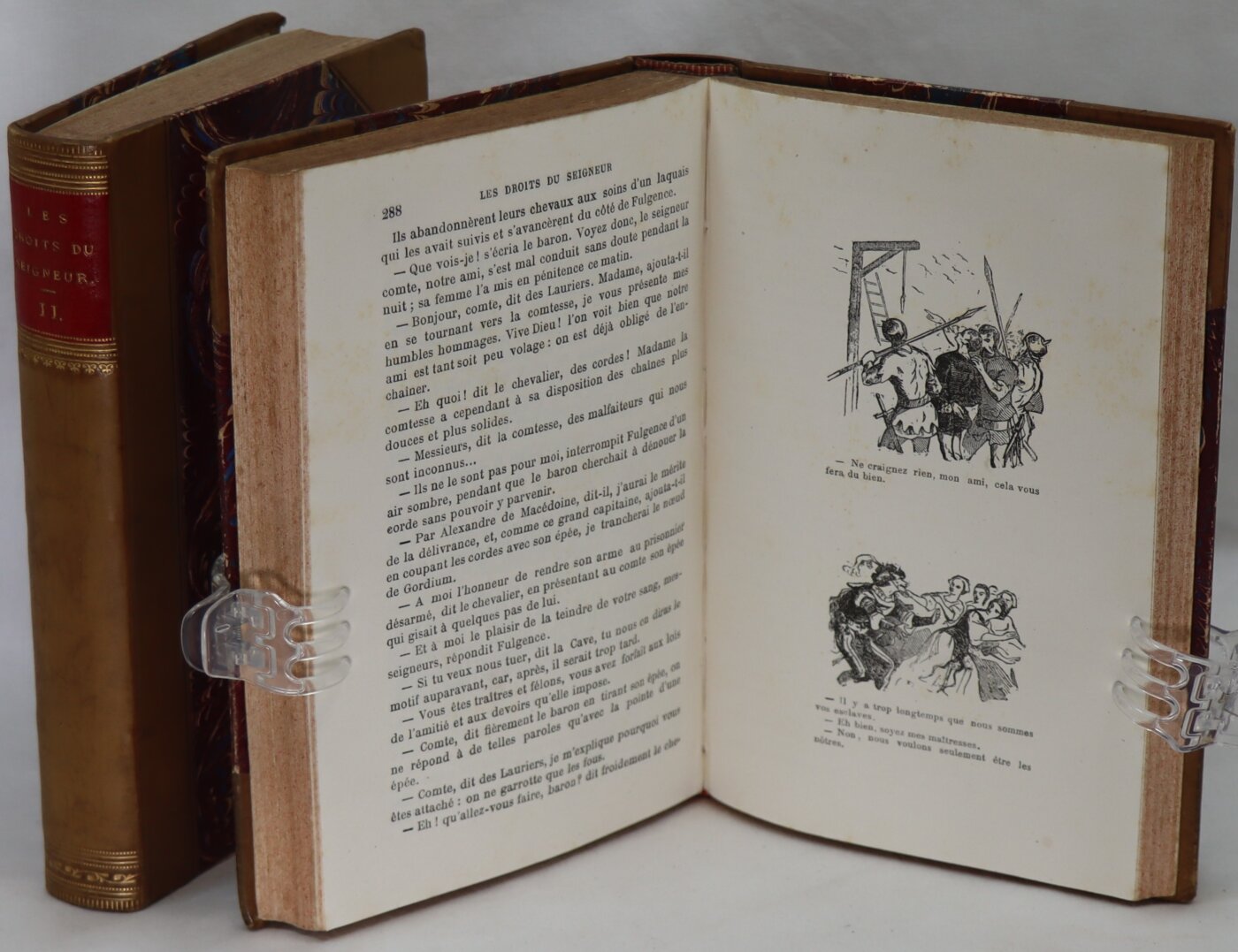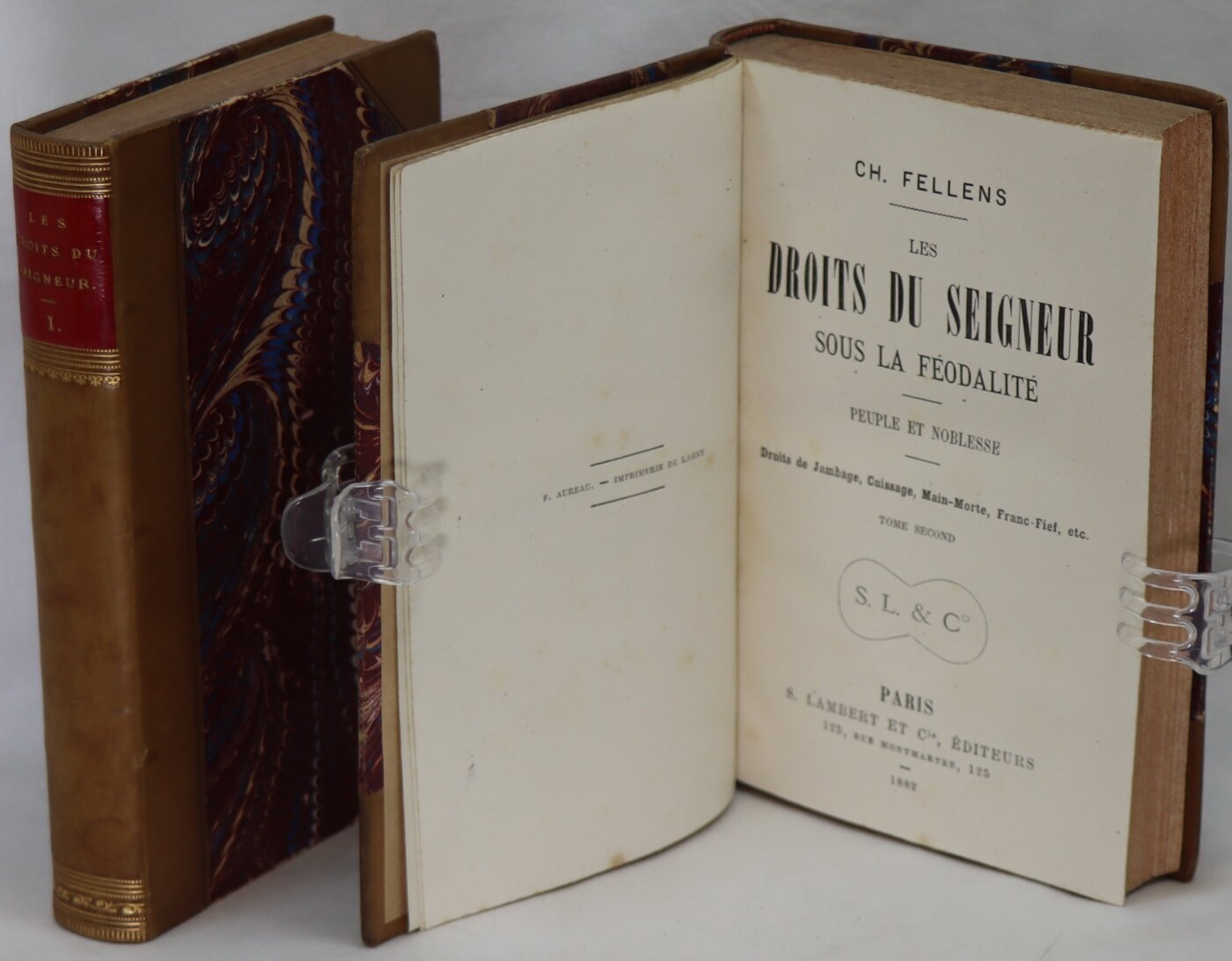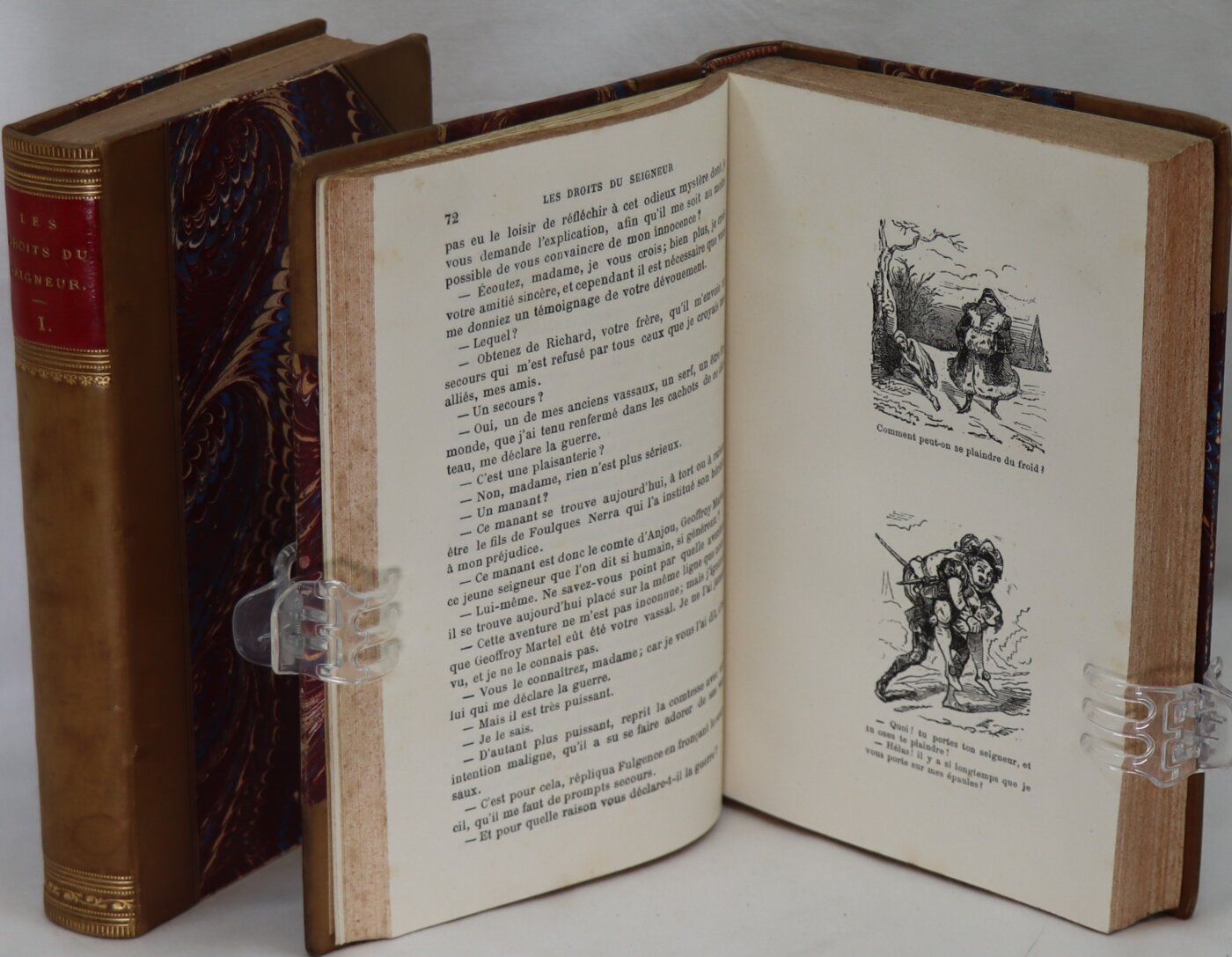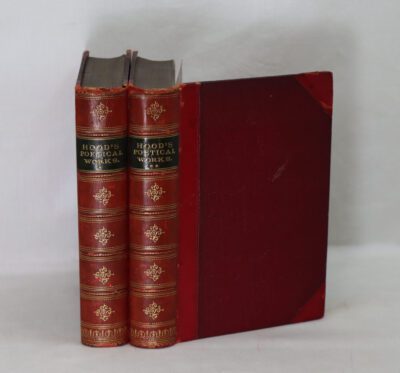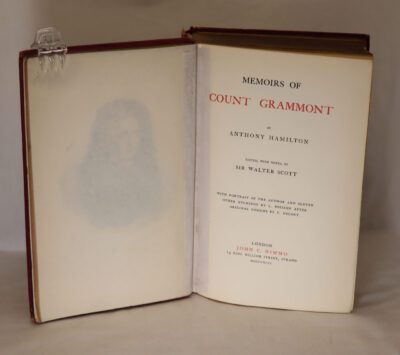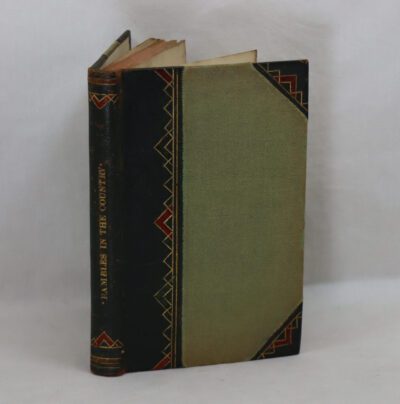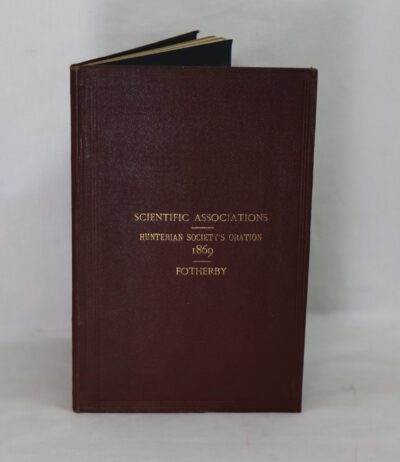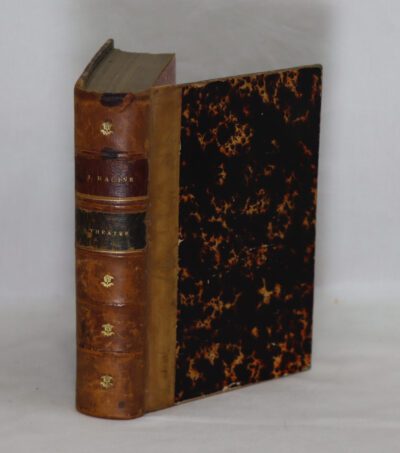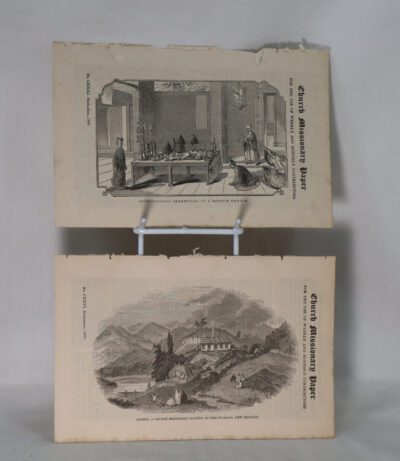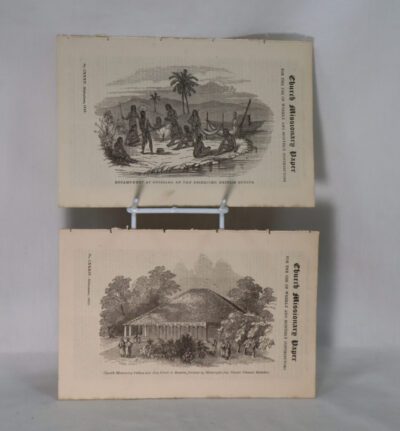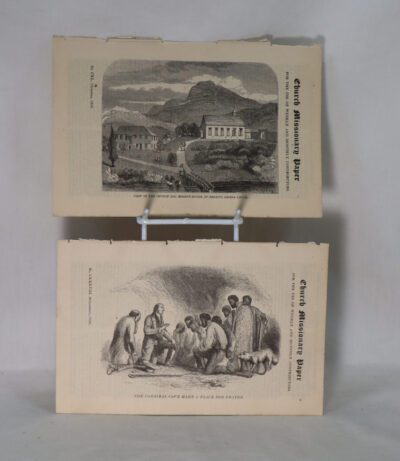Les Droits du Seigneur.. Vols I & II.
By Ch. Fellens
Printed: 1882
Publisher: S Lambert et Cie. Paris
| Dimensions | 12 × 18 × 3 cm |
|---|---|
| Language |
Language: French
Size (cminches): 12 x 18 x 3
Condition: Very good (See explanation of ratings)
Your items
Item information
Description
Tan calf spine with red title plate, gilt decoration and title. Maroon marbled boards. Dimensions are for one volume.
- We provide an in-depth photographic presentation of this item to stimulate your feeling and touch. More traditional book descriptions are immediately available
- Note: This book carries a £5.00 discount to those that subscribe to the F.B.A. mailing list
In two well bound volumes which are tight and very readable. Please view the photographs. A well illustrated novel.
Droit du seigneur (‘right of the lord’), also known as jus primae noctis (‘right of the first night’), sometimes referred to as prima nocta, was a supposed legal right in medieval Europe, allowing feudal lords to have sexual relations with any female subject, particularly on her wedding night.
There are many references to the custom throughout the centuries.
The French expression droit du seigneur translates as “right of the lord”, but modern French usage prefers droit de jambage or, more commonly, droit de cuissage.
The term is often used synonymously with jus primae noctis, Latin for “right of the first night”.
In Ancient times: The Greek historian Herodotus mentions a similar custom among the Adyrmachidae in ancient Libya: “They are also the only tribe with whom the custom obtains of bringing all women about to become brides before the king, that he may choose such as are agreeable to him.”
When the plebeians of the Etruscan city of Volsinii rebelled against the aristocrats in 280 BC, “They took their wives for themselves and placed the daughters of the nobles under the jus primæ noctis, while all their former masters on whom they could lay hands were tortured to death.
It is also mentioned in the Babylonian Talmud, regarding a decree imposed on the Jewish community by a Syrian-Greek ruler, in which all Jewish brides were taken before their wedding.
In the Middle Ages: The medieval marriage fine or merchet has sometimes been interpreted as a payment for the droit du seigneur to be waived. Alternatively, it has been interpreted as compensation to the lord for the young women leaving his lands. Encyclopædia Britannica states that the evidence indicates it was a monetary tax related to vassal marriages, since a considerable number of seigneurial rights revolved around marriage.
A similar payment to church authorities has also been interpreted as relating to the droit du seigneur. However, according to British scholar W. D. Howarth, the Catholic Church at some times prohibited consummation of a marriage on the first night. The payment was for an indulgence from the church to waive this prohibition.
In the Wooing of Emer in Irish mythology the King Conchobar has the droit du seigneur over all marriages of his subjects. He is afraid of Cú Chulainn’s reaction if he exercises it in this case, but is equally afraid of losing his authority if he does not. The druid Cathbad suggests a solution: Conchobar sleeps with Emer on the night of the wedding, but Cathbad sleeps between them.
The biography of Gerald of Aurillac written by Odo of Cluny (879–942) gives an account of the young nobleman demanding to rape one of his serfs, only to have the act averted by a miracle, sending Gerald on the road to sainthood. American historian Vern Bullough suggested that this illustrates that such behaviour was commonplace in the period, and that the “legend [of droit du seigneur] reflected the reality”.
In the 14th-century French epic poem Baudouin de Sebourc, a tyrannical lord claims the jus primae noctis unless he receives part of the bride’s dowry.
The supposed right was abolished by Ferdinand II of Aragon in Article 9 of the Sentencia Arbitral de Guadalupe in 1486.
Want to know more about this item?

Related products
Share this Page with a friend


